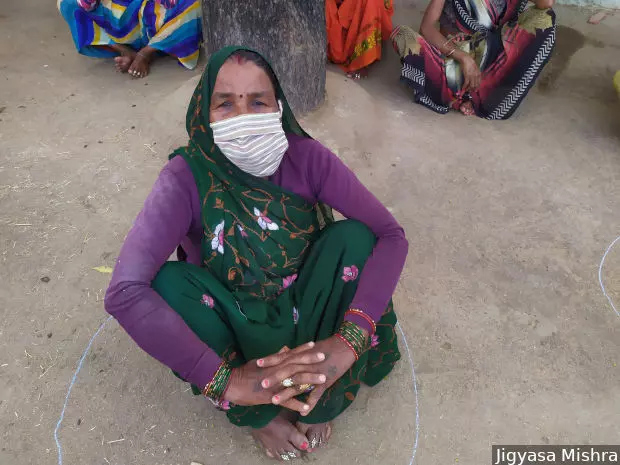In 7 UP districts, no screening at borders, no physical distancing, 1000s of migrants on the move


A 65-year-old woman in Basaura village of Kabrai block said she had been coughing “for a long time”, but police had turned her away from hospital, asking her to come back when the lockdown was over.
Independent journalist Jigyasa Mishra has traversed seven districts over two days--from Chitrakoot on the Madhya Pradesh-Uttar Pradesh border, through Banda, Mahoba, Hamirpur, Kanpur, Unnao and north to Lucknow--and not once has she been screened for COVID-19 or asked for a travel pass despite passing through orange and red zones.
“By 11.30 a.m. on May 12, I had reached Soora, a village in Mahoba district of Uttar Pradesh, crossing two district borders and one state border,” she writes in her despatches to IndiaSpend, “But to my surprise, I was neither screened for nor asked for any travel-pass throughout these 180 km.”
Riding her scooter along NH-35 from Chitrakoot to Mahoba via Banda, which is an orange zone, she found no sign of a lockdown at the local market--no masks, no social distancing for vegetable vendors or general store staff, for the public and even for the few policepersons around.
In Mahoba district, also an orange zone, she met a 65-year-old woman in Basaura village of Kabrai block, who said she had been coughing “for a long time” but police had turned her away from hospital, asking her to come back when the lockdown was over.
The next day, she rode all the way to Kanpur without being screened or asked to show her pass, even after crossing four district borders and two toll booths.
Dodging rash truckers on poorly lit roads from Hamirpur to Kanpur to Lucknow, she crossed migrant workers walking and cycling along National Highway 27, and some 500 trucks transporting migrants--in one, 150 people were standing because there was no room to sit, traveling all the way from Maharashtra, some 1,250 km away.
The majority of shops and dhabas along the highways are now open, where hundreds of migrants were clustered around tables, with no physical-distancing and wearing no masks.
“I have two cows back in my village in Barabanki and here my child is crying for milk,” said Sushma Rawat, traveling since four days by truck from Mumbai.

“I have two cows back in my village in Barabanki and here my child is crying for milk,” said Sushma Rawat, traveling since four days by truck from Mumbai.
The next morning, May 13, in the state capital of Lucknow, categorised as a red zone, people were rushing to offices, buying groceries and garments--and alcohol.
In Gosaiganj in Lucknow, she met two girls in Meesa village, Archana Rawat and Priya Devi, studying in class 10 and 12. They said their school is conducting online classes but they do not have smartphones. “We know we’re losing out in our Board exam year,” they said.


